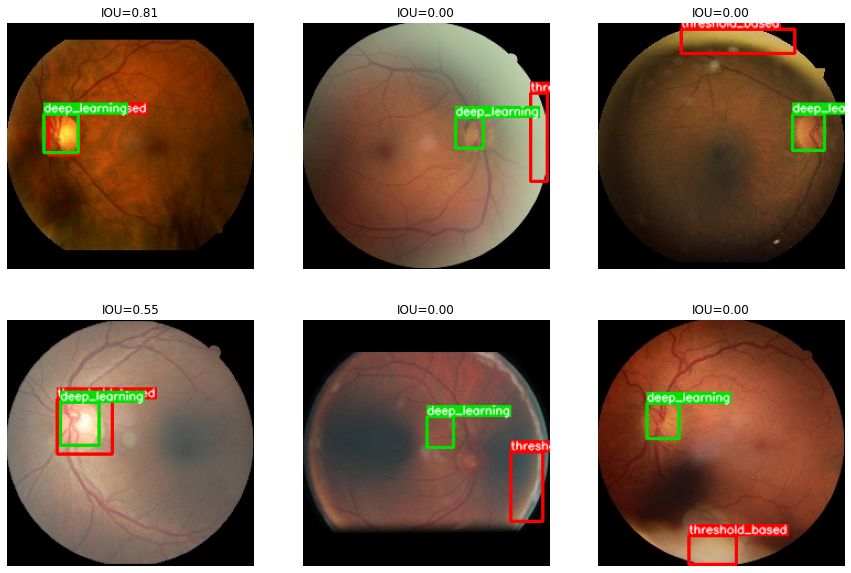The optic disc is an important area for detecting glaucoma, as this condition affects the optic disc and surrounding regions. To help with more efficient screening, I developed a threshold-based algorithm for automatically detecting the optic disc in fundus images.
Rather than manually labeling hundreds of images to train a deep learning model, I decided to find a more automated approach. After reviewing research papers on optic disc detection, I found that while threshold methods could work, determining the right threshold value was challenging. Working with what we know about optic discs (they’re circular and have a consistent size ratio relative to the eye), I created a Python solution using OpenCV.
The algorithm intelligently adjusts threshold values until it identifies areas matching the expected optic disc characteristics, effectively automating what would otherwise be manual work.
Then, I used this threshold-based method to label all of the dataset and train a deep neural network for the final optic disc localization. I used ResNet34 with SmoothL1Loss to train a the deep learning model to predict the top-left and bottom-right corner of optic discs. This approach was possible because I normalized all of the images to a fixed size.
Results of the deep learning model:
GitHub link: https://github.com/mh-salari/self_training_optic_disc_localization/blob/main/threshold_localization.ipynb
